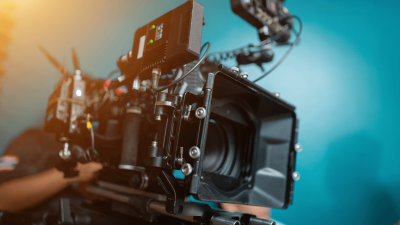In the vast realm of filmmaking, the art of storytelling is not solely confined to the script or the actors’ performances. A crucial element that often goes unnoticed but profoundly influences the audience’s experience is cinematography.
The lens through which a story is visually narrated can be as pivotal as the narrative itself.
The Power of Lens Selection
The lens serves as the storyteller’s brush, painting the canvas of the film with light, colors, and emotions. Each lens possesses unique characteristics, and the careful selection of the right lens can shape the entire tone of a scene.
A wide-angle lens, for instance, invites the audience into expansive landscapes, fostering a sense of grandeur and openness. In contrast, a telephoto lens can intensify emotions by capturing close-ups with a shallow depth of field, drawing viewers into the intimate details of a character’s expressions.
Every lens choice is a deliberate decision that influences how the audience perceives the narrative. In a suspenseful moment, a cinematographer might opt for a longer focal length to create a compressed and claustrophobic atmosphere, heightening the tension.
Conversely, a wide-angle lens might be chosen to establish a vast and mysterious setting, enhancing the sense of scale and anticipation.
Mastering Cinematic Lighting Techniques
Beyond the lens, the play of light and shadows further elevates the storytelling experience. Cinematographers harness the power of lighting to evoke moods, accentuate key elements, and guide the audience’s focus. A well-lit scene with soft, diffused light may convey warmth and tenderness, while harsh, directional lighting can create a stark and dramatic atmosphere.
The interplay between light and shadow is not only a technical consideration but a creative choice that communicates subtext and nuance. In a film noir setting, chiaroscuro lighting intensifies the mystery, emphasizing the duality of characters and the ambiguity of their motives.
Editing: The Final Stroke in Cinematic Storytelling
As the saying goes, “Film is made in the editing room”. The marriage of visuals, sound, and pacing in the editing process is where the narrative truly comes to life. Each cut is a decision, each transition a deliberate choice to maintain the flow and rhythm of the story. Editing is the final stroke in the crafting of a compelling cinematic tale.
Seamless transitions, well-timed cuts and the creative use of visual elements such as free Adobe Premiere Pro templates are essential in maintaining the audience’s engagement. The pace of editing can influence the emotional beats of a scene, whether it’s a rapid sequence of cuts during an action sequence or a deliberate slow montage for reflective moments.
Attention to detail in editing ensures that the story unfolds organically, keeping the audience captivated from the opening scene to the closing credits.
The Artistry of Cinematic Composition
One cannot overlook the significance of the composition itself in the realm of cinematography. The framing of shots, the placement of characters within the visual space, and the overall composition contribute to the narrative’s visual language. A well-composed frame can convey meaning, emotion and subtext without uttering a single word.
The meticulous arrangement of elements within the frame is a silent but powerful storyteller, guiding the audience’s gaze and enhancing the overall cinematic experience.
In conclusion, the synergy of lens selection, lighting techniques, meticulous editing and cinematic composition converges to create cinematic masterpieces.
Each frame is a carefully crafted brushstroke that contributes to the visual poetry of storytelling.

